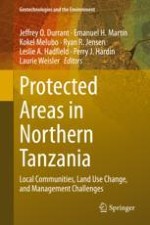Northern Tanzania is an important and diverse ecological and cultural region with many protected lands. This book, Protected Areas in Northern Tanzania, brings to the forefront research on significant issues and developments in conservation and management in national parks and protected lands in northern Tanzania. The book draws attention to issues at the intersection of conservation, tourism, and community livelihood, and several studies use geospatial technologies—Geographic Information Systems and remote sensing data and techniques—to study land use and land cover conversion. With contributions from professors at the Mweka College of African Wildlife Management located at the foot of Mount Kilimanjaro and other Tanzanian researchers, the book provides important perspectives of local experts and practitioners. Protected Areas in Northern Tanzania provides a significant contribution in research and technological advancement in the areas of wildlife conservation and protected land management throughout this critical region.
